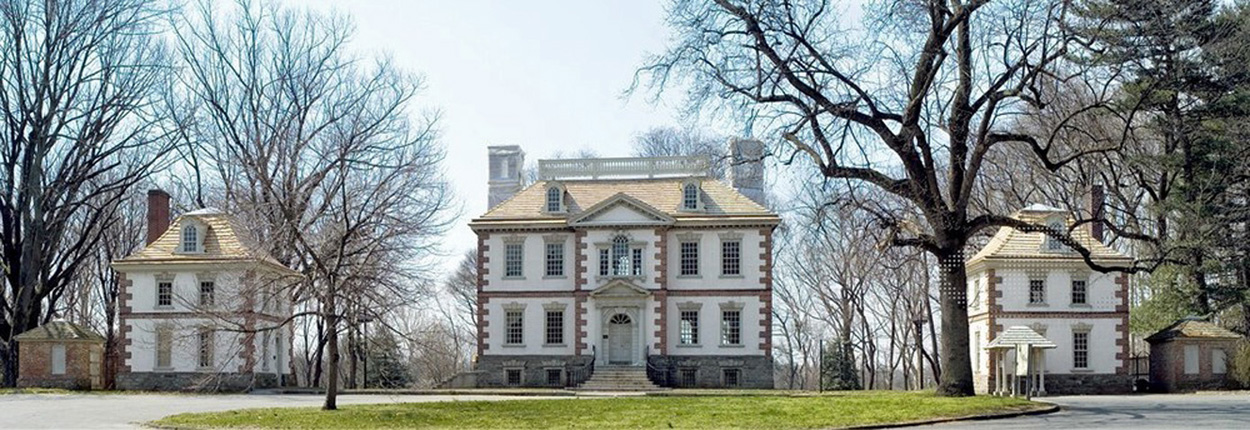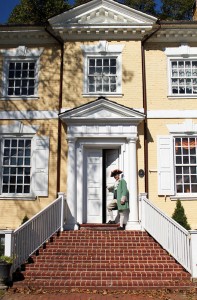
Many of us think America became politically divided in 2016.
A tour of historic homes in Philadelphia’s Fairmount Park showed me that our predecessors faced even greater strife.
Opposing colonists attacked each other as being unpatriotic. There were assertions of what we now call states’ rights and cries to take this country back — that is, back to the days when the king ruled a peaceful America.
Philadelphia in the 18th century even saw labeling of certain religious groups, and the expulsion of some minorities. Case in point: The family of David Franks was officially exiled from Pennsylvania, and his property confiscated, because of his sympathy for the crown. His parents were Jewish but David considered himself a man of the Enlightenment who rejected all religions. He married outside the faith and his children were raised as Protestants. Yet his daughter Rebecca repeatedly was referred to, disparigingly, as a Jewess. The Frank family was banished because members were suspected of aiding “the enemy.”
As you walk through the historic park homes, you are reminded that the period of the War for Independence, or Revolutionary War, saw Americans pitted against Americans, not just against Brits. Roughly one-third of Philadelphians opposed secession from the crown. They pridefully called themselves Loyalists. Those who wanted separation chose the label Patriots, and they’re the ones we revere as our Founding Fathers. But the other side also thought of themselves as patriotic.
Where would you stand?
If you were an owner of one of these park houses, you were wealthy and, therefore, favored the status quo, which meant remaining as part of the British Empire.
Most wealthy Philadelphians saw independence as a reckless leap into the unknown. They believed the British Empire was the dominant force in the world, and provided more liberty than any other society. Why discard that for new local governments run by relative nobodies?
And if you were a cultured person who loved music and theater, that, too, would cause you to align with the Loyalists. George Washington and his Continental Army closed Philadelphia’s theaters and barred concerts. On the other hand, British Major John André, chief aide to British General Sir William Howe, actively involved himself in the arts.
After Washington fled to Valley Forge and the British occupied Philadelphia, Howe visited David Franks at his Woodford mansion to arrange business deals for supplying food and clothes to the British Army. André became an almost-daily visitor at Woodford, where he drew sketches and cut silhouette pictures of the 16-year-old Rebecca Franks and her friends. André, age 27, was a talented painter and singer and writer of verse. He designed and painted scenery for plays at the Philadelphia theaters that were re-opened by the British occupiers.
At one notable party thrown by André to honor General Howe, the young Rebecca Franks, Peggy Shippen and Peggy Chew appeared in Turkish costumes, and slaves in turbans waited on the guests. Those family names became a part of Philadelphia history. André was rumored to have sexual relations with both Shippen and Chew. Peggy Shippen then married the American general Benedict Arnold, who conspired to turn West Point over to the British. While Arnold fled to England, André was convicted of treason and hanged for his part in the plot.
On a tour through the historic houses Laurel Hill, Woodford and Cedar Grove, I heard about the divisive decisions made by early Philadelphians. The excursion was organized and guided by the Philadelphia Museum of Art and the City of Philadelphia to observe the 2016 presidential race and the Democratic National Convention.
The families that lived in these homes 240 years ago found themselves on opposite sides of shifting political lines. Specifically, the owners of Laurel Hill and Woodford enjoyed the British military occupation of Philadelphia. Then these Loyalists had to flee when the British evacuated the area.
The grey stone Cedar Grove — originally located in Frankford — was owned by a Quaker family with pacifist views. Elizabeth Coates Paschall was a shopkeeper who announced that she would not buy or sell any British-made goods, but could not support going to war against Great Britain. The restored home boasts beautiful tea service, reminding us that her family served smuggled Dutch tea rather than the British tea. (Paschall saved money, too, because English tea carried a steep tax; remember how certain Patriots in Boston threw British tea into the harbor to protest that tax?) Most Quakers were Loyalists and they excommunicated those who differed, but others — like Elizabeth’s family members — founded an independent Friends’ meeting called the Society of Free Quakers, which still exists.
When industrialization changed the Frankford area, her descendants built a new home in Chestnut Hill and developed its gardens into what is today the Morris Arboretum. The Cedar Grove building was moved to Fairmount Park, stone by stone and floorboard by floorboard, between 1926 and 1928.
Most of the historic houses are on the eastern bank of the river but Cedar Grove was moved to the western shore because that most resembled the wooded terrain of 18th-century Frankford.
Laurel Hill was built by Rebecca Rawle, a wealthy widow, around 1767, a two-story Georgian brick structure on a bluff overlooking the Schuylkill River. Her second marriage was to the former mayor of Philadelphia, Samuel Shoemaker. A Quaker, he refused to take a position on independence, but he accepted a job with the British when they occupied Philadelphia. Because of this affiliation, the home was seized by the Revolutionists and was turned over to the French ambassador to the Continental government for his use.
Woodford is one of the most elegant surviving buildings of the period. It was more than a “summer retreat” but was where the Franks did most of their socializing; their center city Philadelphia quarters were rented. Woodford’s elegant rooms include china actually imported from China, and gorgeous furniture from the 18th century.
How I wish I could have attended those plays and parties with the Loyalists. That must have been a fun event when Major André feted the departing General Howe on May 14, 1778, with the teenaged Rebecca Franks, Peggy Shippen and Peggy Chew as “Queens of Beauty” with flatboats carrying guests up the river, a 17-gun salute by British warships, a tournament of jousting knights, and a ball and midnight banquet with fireworks.
Just a few days after that party, General Howe sailed home to England, and a month later the English troops vacated Philadelphia. Then all those citizens who partied with the British would be condemned as traitors.
An earlier version of this story appeared in Broad Street Review
Please share your thoughts with us. Address to editor@theculturalcritic.com